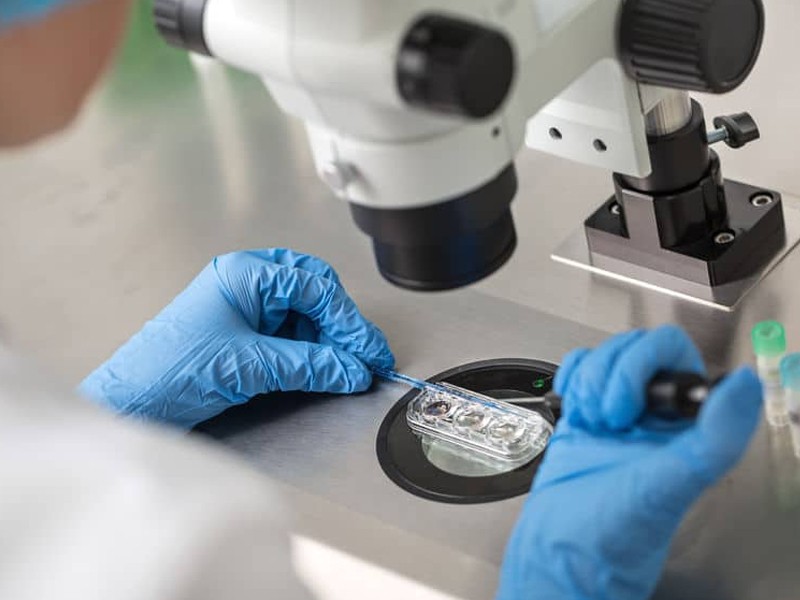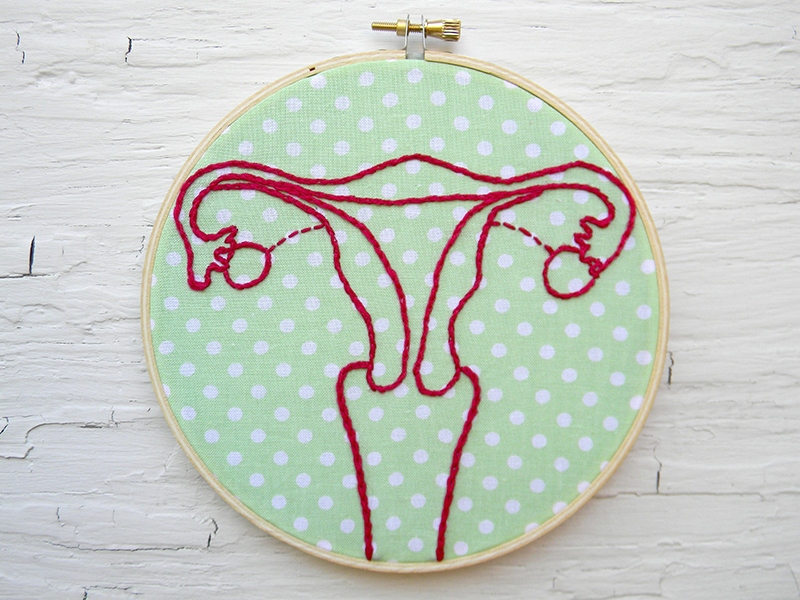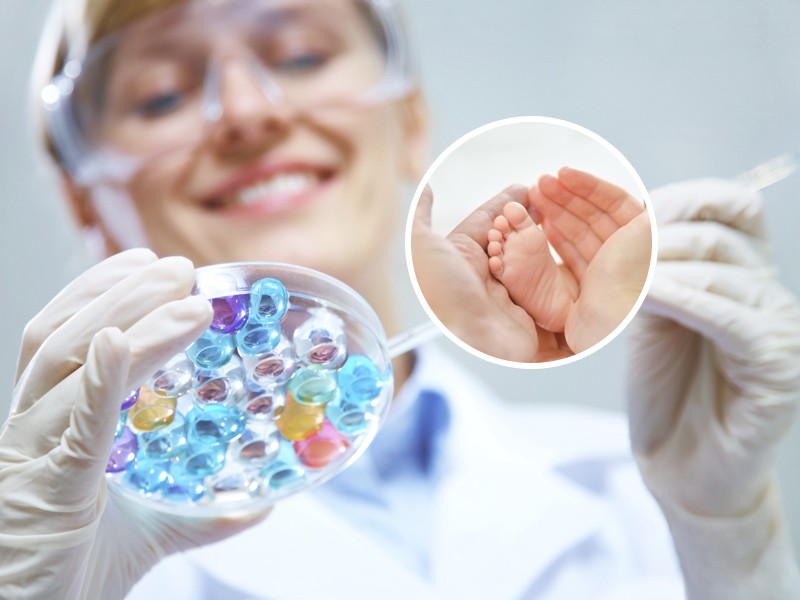IVF puncture

What is follicular puncture?
Infertility is no longer a verdict, but only a diagnosis. The most effective and efficient way to treat problems with conceiving is the IVF method. The procedure includes several stages, one of which will be follicle puncture.
Follicular puncture is carried out with the aim of taking material, namely the formed eggs (oocytes) at the time of ovulation, for subsequent fertilization in the laboratory.
To ensure a sufficient supply of healthy, full-fledged eggs, pre-stimulation with hormonal drugs is required. After the drug exposure, the ovulation phase begins, where the woman will have an ivf-puncture, also known as transvaginale follicular puncture.
Today, it is a convenient and effective option for couples who cannot conceive a child on their own. IVF can be performed for solving such problems:
- tubal-peritoneal factor (problems of obstruction of the tubes);
- anovulation due to hormonal imbalance;
- endometriosis;
- disturbance of male reproductive function;
- age indications of partners;
- problems with conception of unknown etiology.
Preparation for ovarian puncture in IVF cycle
Considering that the puncture procedure is a short, but surgical intervention, it is necessary to prepare carefully. The main steps include:
- Strict exclusion of sexual intercourse in the last few days before the procedure.
- Minimization, and preferably exclusion, of physical activity and sports activities.
- Monitoring the intake of any medications by a reproductive specialist, even If it is not related to the stimulation of egg growth.
- A week before the eco-puncture, you should adhere to a protein diet, fortified foods, exclude foods that stimulate fermentation.
- Transvaginal surgery is performed strictly on an empty stomach, with an empty bladder.
How does IVF-puncture work?
The beginning of the follicle puncture begins a few more days before the direct surgical intervention. Observing the course of ovulation, studying the size of the follicle, the number of eggs, the doctor prescribes the day for the injection of HCG. This is a kind of hormonal trigger for the accelerated maturation of eggs. Basically, it takes 35-37 hours before the puncture.
With the onset of superovulation, you need to visit the manipulation aseptic room for material extraction. What is important to know when starting a puncture:
- all manipulations are carried out under continuous control through an ultrasound machine or sensors;
- the doctor will treat the external genitals with a special solution;
- anesthesia (pre-selected for the patient) will be used for pain relief;
- the procedure takes from 10 to 20 minutes.
About the procedure itself:
- After processing the external genitalia and anesthesia, the doctor pierces the vaginal wall with a hollow puncture needle, and inserts the sharp end into the follicle.
- A syringe is fixed on the outside of the needle, with the help of which the contents of the follicle (oocytes) are taken.
- The needle is removed from the vagina and the patient will have to rest for 2-3 hours.
After the normalization of the condition, which is being observed by the gynecologist and anesthesiologist, you can leave the clinic.
The received material is transferred to the embryologist. The task of the specialist is to scan the follicular fluid, isolate the oocyte and place it for preliminary incubation for subsequent fertilization with sperm.
Follicle puncture efficiency
If it turns out to grow from 8 to 15 oocytes, then this is almost 100% the result of pregnancy after the protocols are carried out. There are situations of increased ovarian reserve, when the number of oocytes increases to 30. This should be taken into account by the fertility specialist, since the data may indicate hyperstimulation syndrome. A number below 8 significantly reduces the possibility of fertilization, up to a delay and another IVF cycle.


